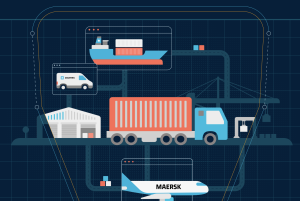 The recession has made it clear that organisations of all sizes in all geographies face the possibility of going out of business, which would have a ripple effect both upstream and downstream.
The recession has made it clear that organisations of all sizes in all geographies face the possibility of going out of business, which would have a ripple effect both upstream and downstream.
In a perfect world, relationships with suppliers would be truly collaborative, with the supplier communicating well in advance of failure or disruption. But in the real world, companies need a process and checklist to include in their supplier qualification and audit programmes.
Watch for red flags
AMR Research’s Jane Barrett and Mickey North Rizza advice that you consider the following early warning signs that your supplier may be facing difficult times:
• It has a large part of its businesses in depressed industries, such as automotive or building materials.
• The supplier has raw material shortages or cannot meet the agreed lead times because of late purchase order placements.
• It has heavily cut investments in R&D, IT, equipment, or resources.
• The quality of supply is deteriorating.
• The supplier has entered into significant contracts with new customers.
• It’s laying off staff, with your sales person nowhere to be found.
• It offers additional discounts for early payment or requires cash in advance.
• The supplier is restating earnings and outlooks.
• It has high-labour content that requires a large weekly payroll. For example, since sand castings are labour intensive, if workers can’t be paid, the supplier could shut down.
• The supplier has absorbed heavy, upfront R&D and manufacturing tooling investments on new products that are delayed, therefore extending the time to break even.
When supplier bankruptcy hits industries like high tech and automotive hard, it brings a ripple effect. Suppliers could be performing well, but a product or plant decision by one company can send a ripple back through to the raw material suppliers, which puts others at risk. Consider the Big 3 U.S. automakers: Ford faced tremendous risk based on General Motors’ and Chrysler’s financial situations. Not only could Ford have suffered, but so could have the suppliers of all three companies.
Due diligence in supplier risk management should include the following:
Assess risks
“Using standard templates and weighted risk scoring during qualification and ongoing audits enables your company to build up supplier history and track trends. A broad range of elements should be rated, including supplier financial status, quality, pricing, technology leadership, location, material contracts and viability, and logistics risks. Also, be sure to ask if your company’s current processes and due diligence in qualifying and auditing suppliers needs to be expanded to include supplier financial health criteria.
“Assessing supplier risk requires a broad view of the supply chain. While large organisations like to extend their AP days and push out payments, most do this without assessing their smaller suppliers’ abilities to survive this cash delay. Programme delays can also hurt suppliers that have invested upfront in R&D, resources or technology to support an OEM programme. The risk of delays and early payment requirements also need to be considered when contracting out intermediate manufacturing steps, like coating or braising, to smaller suppliers.
Collaborate with your suppliers
“Ask key or high-risk suppliers to develop a business continuity plan as a joint effort with your company. Describe how, as a partnership, both companies will mitigate risk and avoid supply disruption. Your company can also put additional language in the contract, such as requiring a 60- to 120-day notification before the supplier shuts down.
“Involve suppliers early in product development to incorporate their best capabilities and ensure manufacturing process capability is in place. Continental VDO uses software to simulate a Design of Experiment (DOE) to reduce the inventory risk required for final DOE and process prove out. Honeywell Aerospace trains suppliers on the use of spreadsheets and uncomplicated tools to identify and prioritize risks within their own operations.
Consider mitigation planning
“Have backup plans in place for all key, single-source, or high-risk suppliers. Assessing the risk is important, but a “disaster plan” is also necessary. This plan should include modelling your potential business outcomes, fully understanding the costs and tradeoffs involved in implementing such a plan (such as inventory buffers based on ABC classification), and deciding the party to fund it. It needs to be a cross-functional strategy, which is something many organisations struggle with because manufacturing, procurement and logistics operate in silos, with siloed metrics.
Build the right skills
“Does your organisation’s sourcing and procurement team have the necessary skills and experience in supply chain and supplier risk management? Best-in-class companies educate their teams on how to identify risks and their potential effects, how to use the data, and how to be more aware of potential threats. As a result, they empower their staff to make betters decisions, building a culture of risk awareness.
Improve visibility
“Real-time visibility of supplier inventory, shipments, and material flows can provide early warning. Insight into supply chain intelligence data related to specific countries or routes can also help. This visibility needs to be across multiple tiers, however, which requires an understanding of the end-to-end supply chain (i.e., tracking consumption back to raw materials).
Finally, use scorecards and dashboards
“Having real-time and event-driven data in flexible formats that shows trends and provides options can support predictive decision making. Scorecards should be based on weighted scores and indices. If suppliers are increasing the development and manufacturing of subsystems versus base components, incorporate data analytics to recognise the cause and effect that changes may have on the total system. Mercedes-Benz blamed much of a $1-billion loss a few years back on system quality issues, as it increased the use of software in vehicles.


























